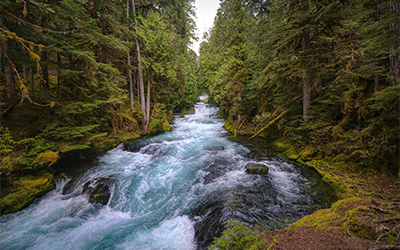
Come Hell or High-Water: Challenges for Adapting Pacific Northwest Water Law
R. T. Caccese and L. B. Fowler
Pace Environmental Law Review (29 May 2020)
The Pacific Northwest region of the United States has been recognized as a leader in crafting water laws that work to balance human needs and ecological considerations. However, this region is experiencing changing dynamics that test the strength of existing water policies and laws. Such dynamics include increasing populations, new and exempt uses, quantification of tribal treaty rights, species protection, renegotiation of the Columbia River Treaty, and the impacts of a changing climate. Together, these dynamics are stressing the legal framework, which remains vital to ensuring sustainable water supplies now and into the future. The history behind water resources management in Oregon, Washing- ton, Idaho, and Montana provides the foundation for the laws in place today. Although all four states share regulatory features, nuances specific to each state have tremendously affected their governance structures and ability to adapt to changing dynamics. Although a challenge to meet these changing dynamics, collaborative efforts offer creative opportunities for meeting current and future needs.
additional materials:
summary slide | DOE highlight | open access manuscript